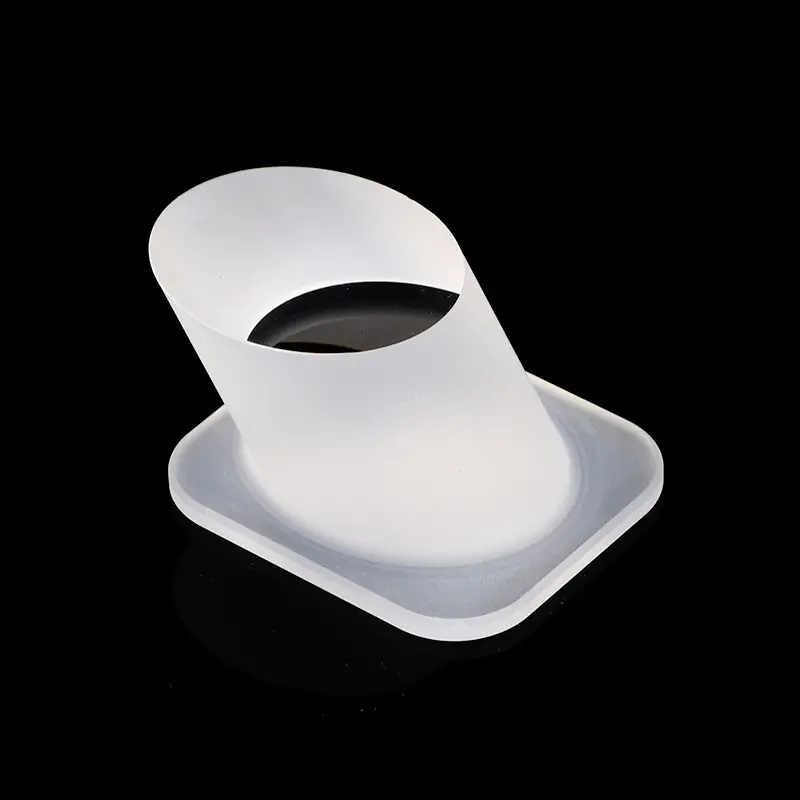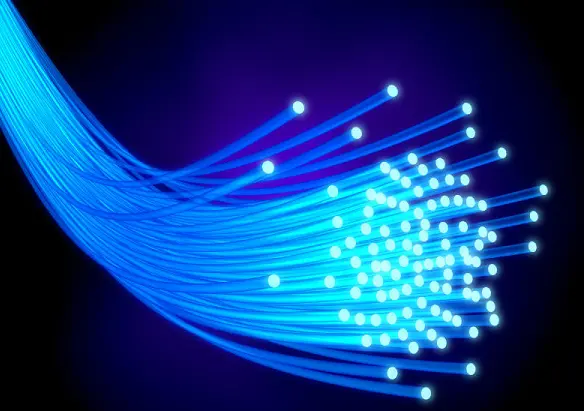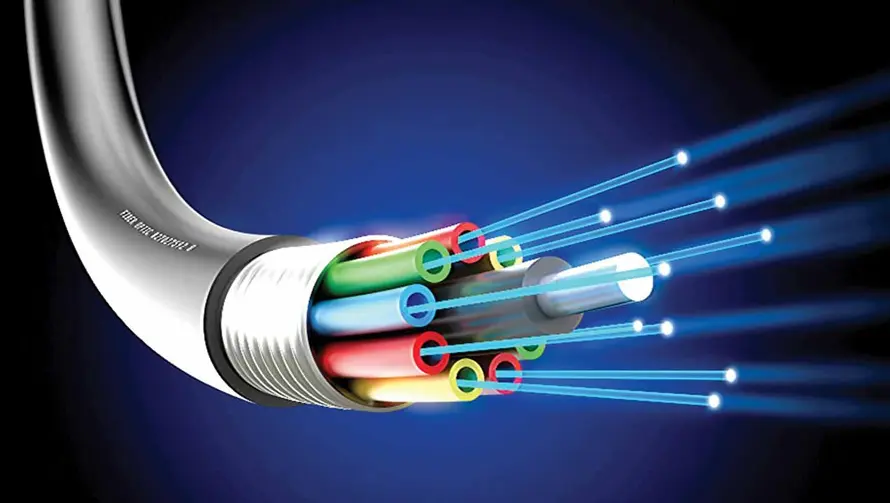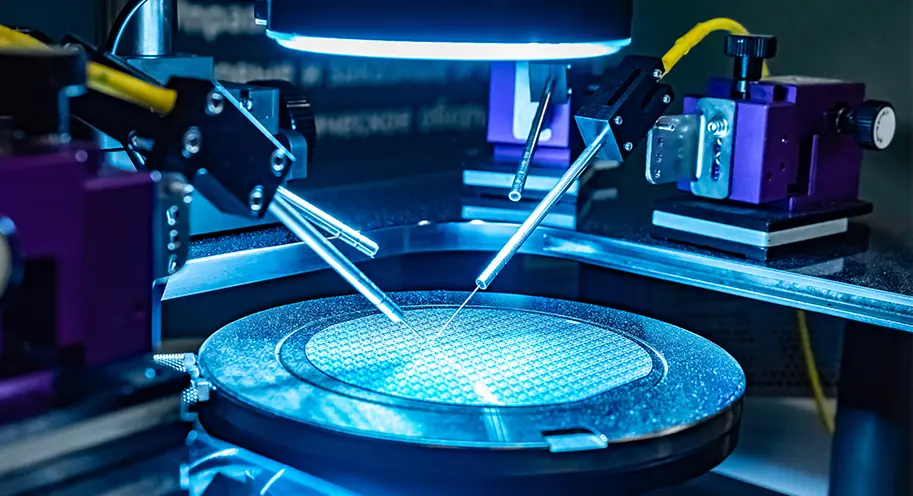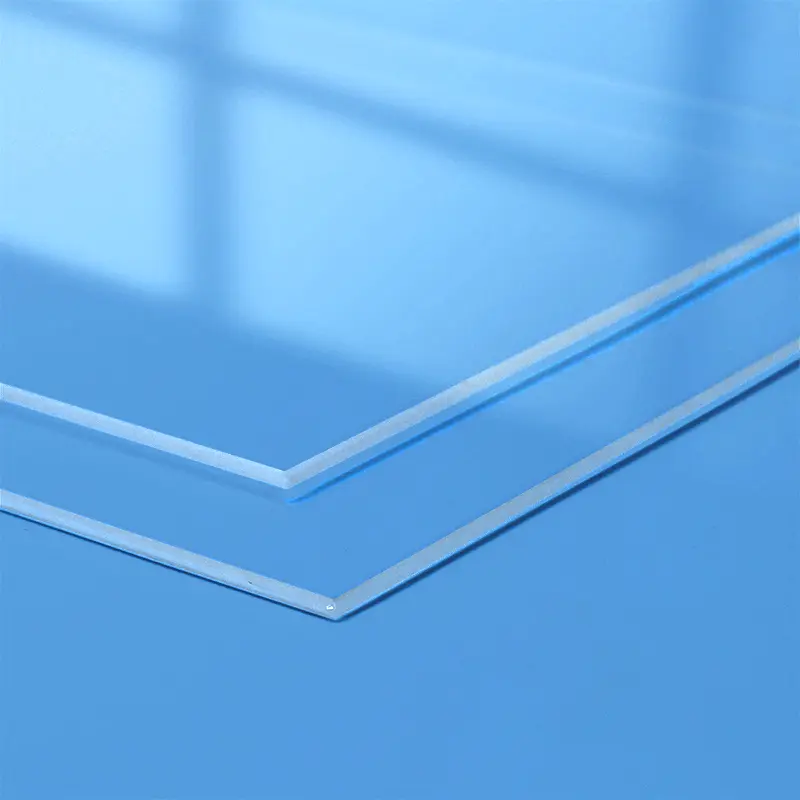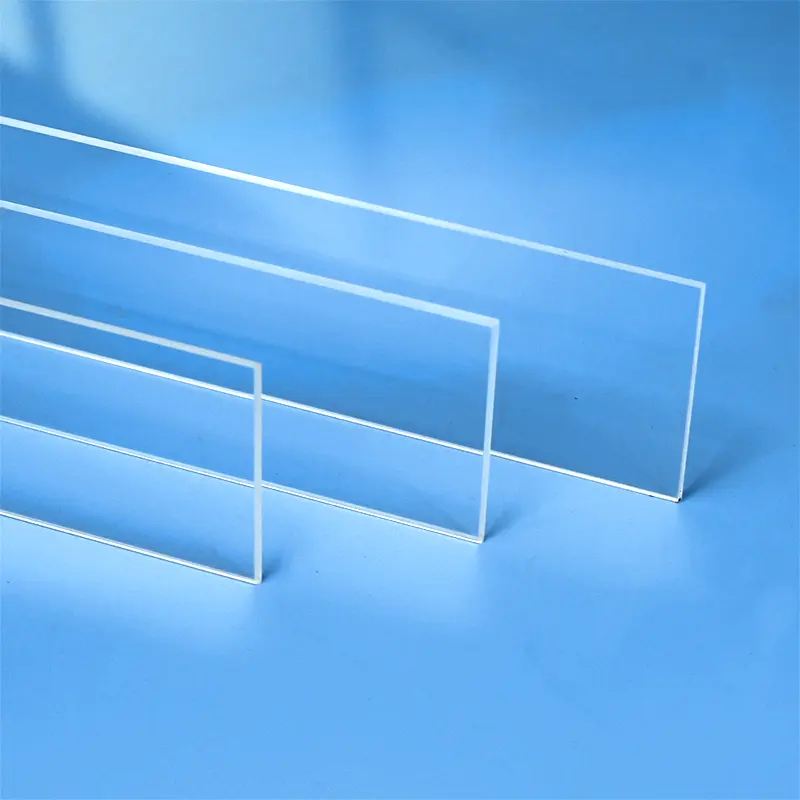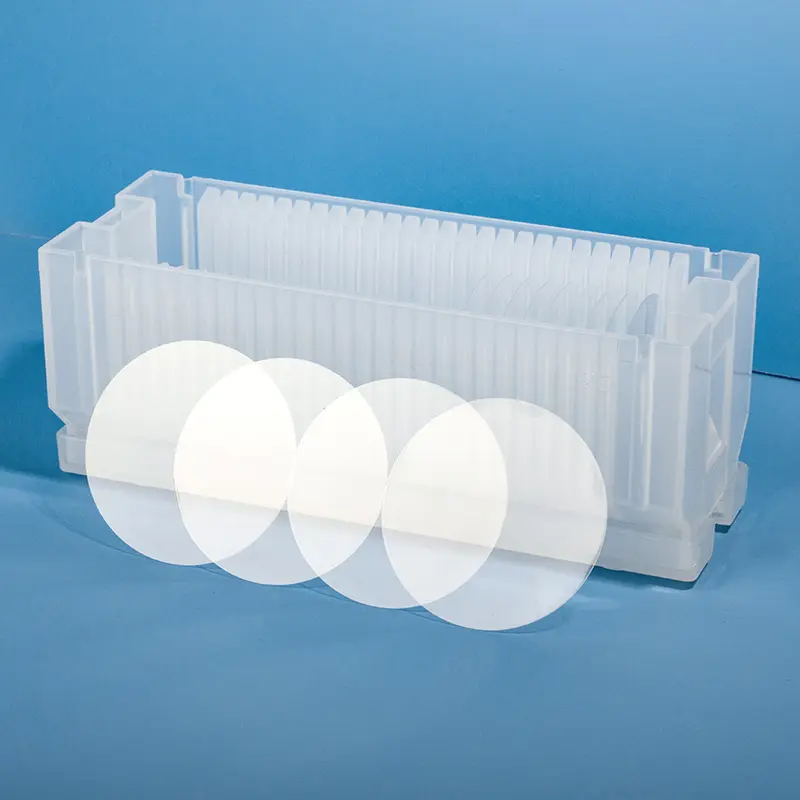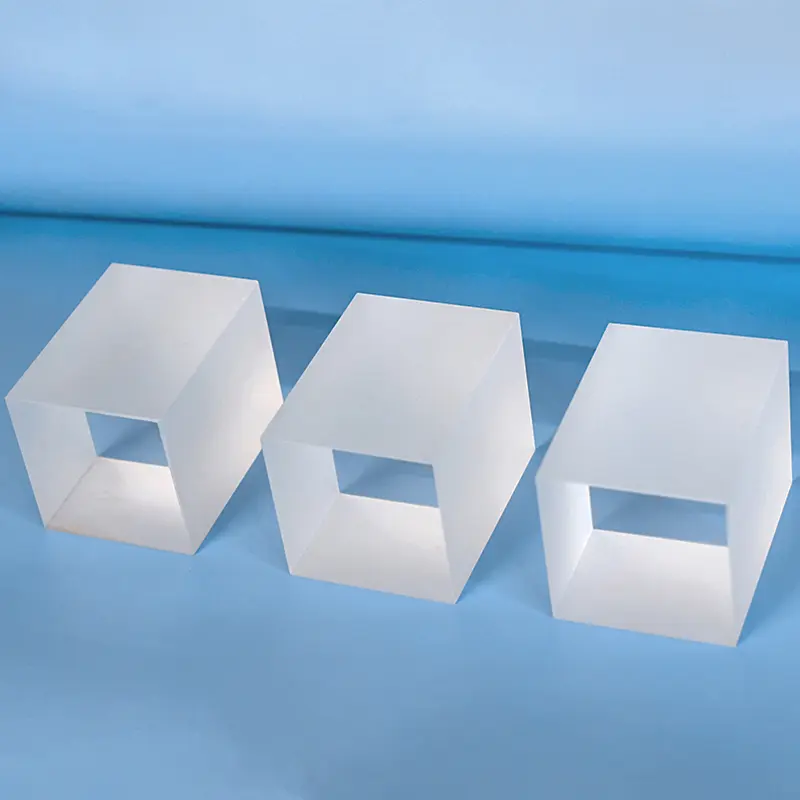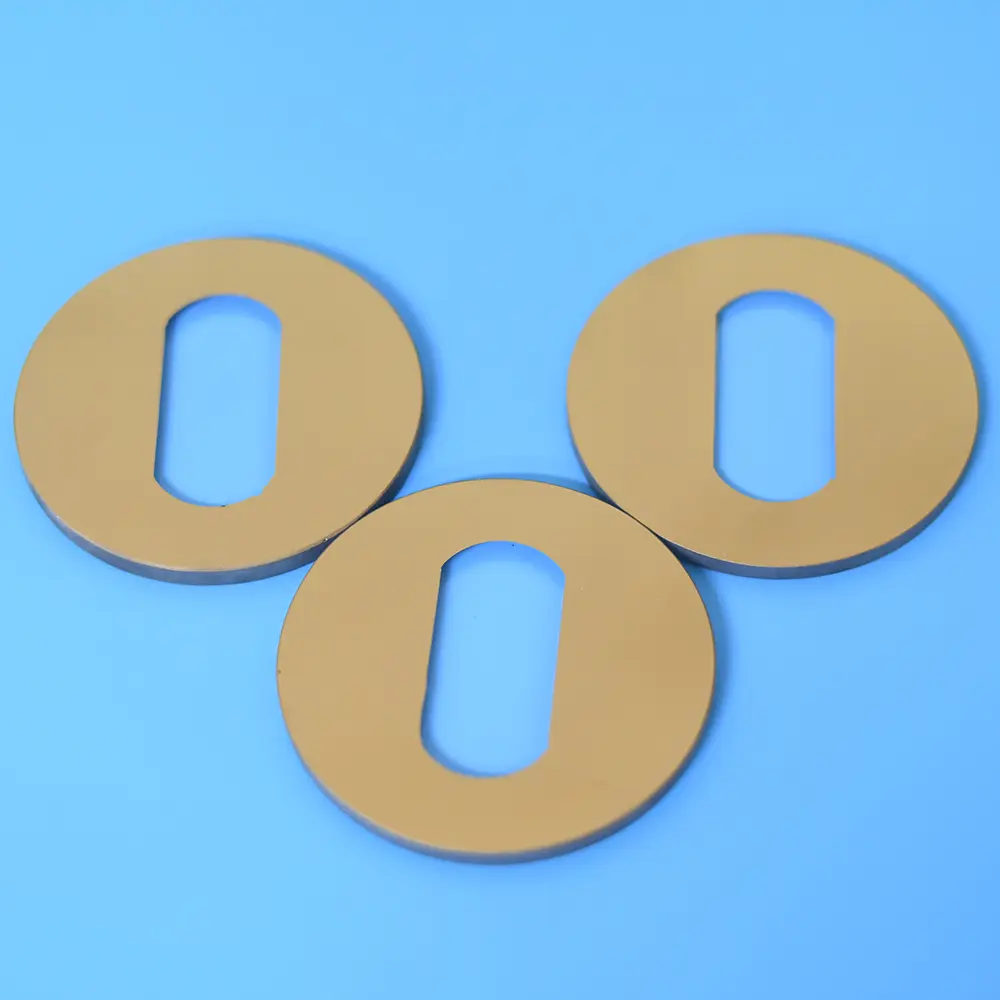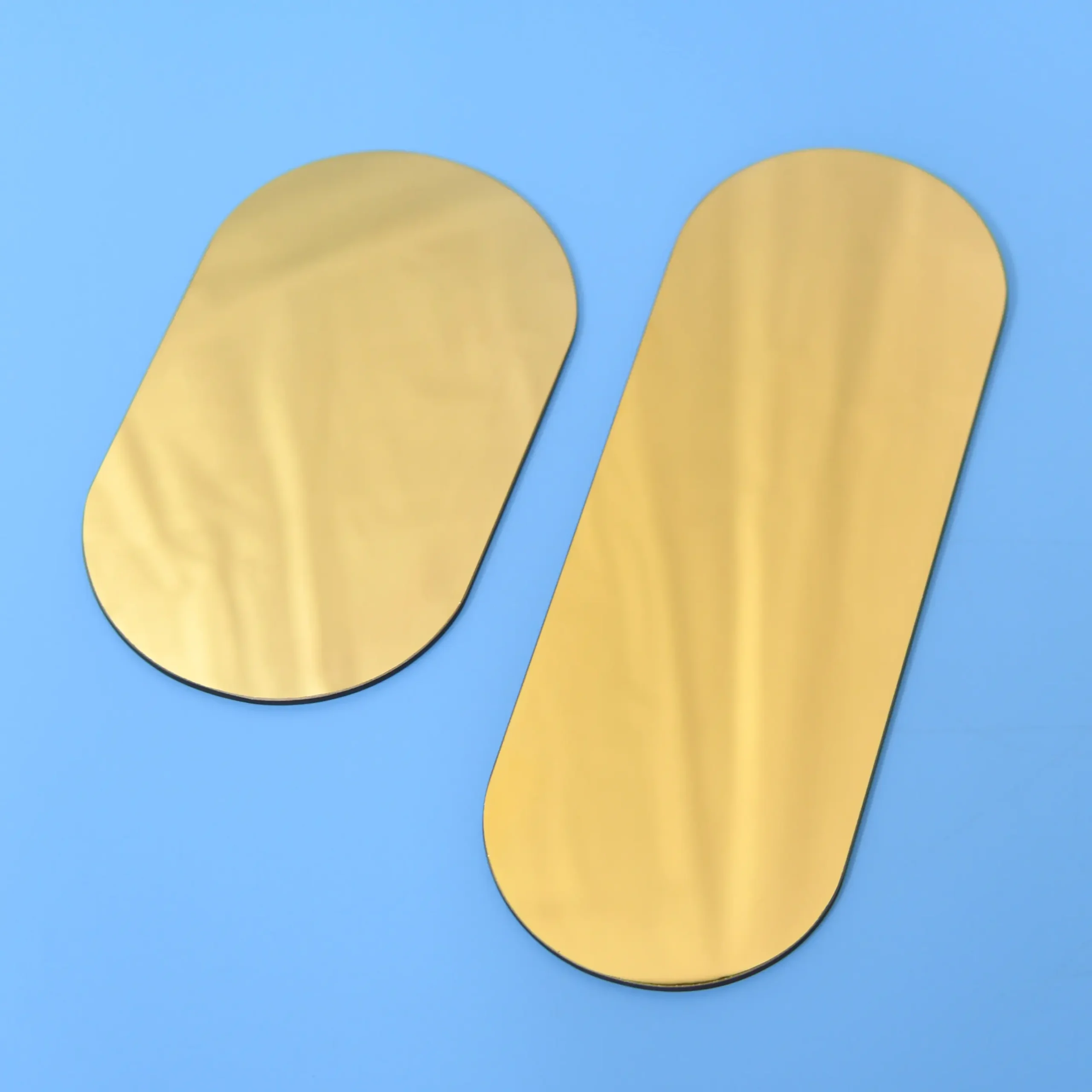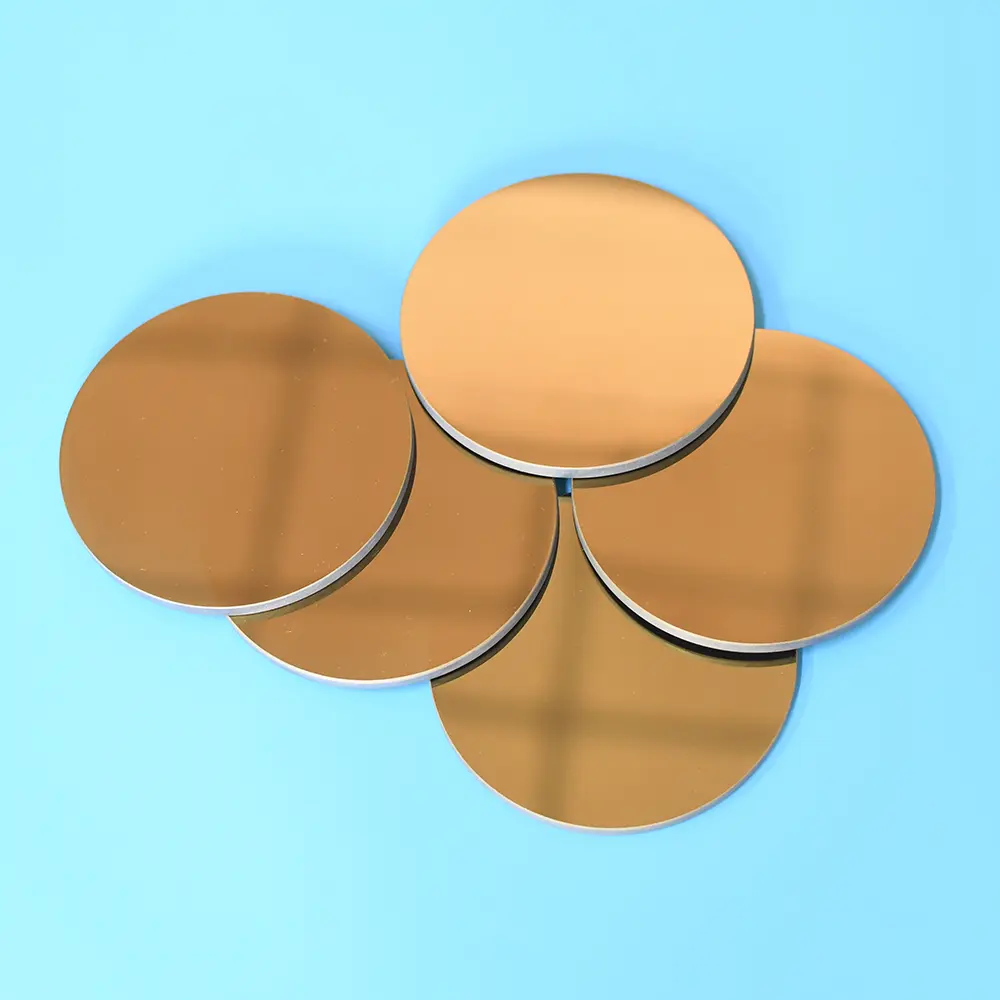Our custom special-shaped quartz windows, such as the unique angled cylindrical design with a flat square base depicted, are precision-machined from high-purity fused silica. Offering exceptional chemical resistance, high-temperature stability, and superior UV transparency, these bespoke components are ideal for demanding observation applications in semiconductor, medical, chemical, and high-vacuum environments where tailored designs and complex geometries are crucial.
| Property Content | Property Values |
|---|---|
| SiO2 | 99.99% |
| Density | 2.2×10³ kg/cm³ |
| Hardness | 5.5 - 6.5 Mohs' Scale 570 KHN 100 |
| Tensile Strength | 4.8×10⁷ Pa (N/mm2) (7000 psi) |
| Compression Strength | >1.1×10⁹ Pa (160,000 psi) |
| Coefficient of Thermal Expansion | 5.5×10⁻⁷ cm/cm·°C (20°C-320°C) |
| Thermal Conductivity | 1.4 W/m·°C |
| Specific Heat | 670 J/kg·°C |
| Softening Point | 1730°C (3146°F) |
| Annealing Point | 1210°C (2210°F) |
| Strain Point | 1120°C (2048°F) |
| Work Temperature | 1200°C (2192°F) |
| Electrical Resistivity | 7×10⁷ ohm cm (350°C) |
| Size | Customized |
| Logo | Customized Logo Accept |
High-Temperature Resistance
Quartz custom windows can withstand extremely high temperatures, with a softening point around 1730°C. They can be used continuously at 1100°C and can tolerate short-term temperatures up to 1450°C.
Chemical Stability
Except for hydrofluoric acid, quartz custom windows are highly resistant to chemical reactions with almost all acids, exhibiting exceptional chemical stability.
Thermal Stability
Quartz custom windows have a very low thermal expansion coefficient, enabling them to withstand dramatic temperature changes. They can endure large temperature differences repeatedly within a short period without cracking.
Optical Performance
Quartz custom windows exhibit good light transmission across the entire spectrum from ultraviolet to infrared. They have a visible light transmission rate above 93%, with higher transmission rates, up to 80% or more, particularly in the ultraviolet range.
Application Scenario
Optical and Light Source Industries
Quartz custom windows, due to their high heat resistance, corrosion resistance, and low thermal expansion, are widely used in the optical field for manufacturing telescope lenses, laboratory optical equipment, communication devices, diffractive lenses, projection displays, scanning equipment, printer optical components, and also in cameras and ultra-flat television screens.
Optical Fiber Communication Industry
Quartz glass is a primary raw material for optical fibers, and its high purity ensures the signal quality of optical fibers. Quartz glass is extensively used in the production of optical fiber rods and drawing processes, guaranteeing high performance and stability of optical fibers.
Photovoltaic Industry
In the photovoltaic field, quartz glass is used as a rigid consumable material in photovoltaic modules, greatly increasing photoelectric conversion efficiency. Quartz crucibles made from quartz glass are used as containers for melting polycrystalline silicon, for the subsequent process of pulling single-crystal silicon rods or multi-crystal silicon ingots.
The primary material of quartz custom windows is high-purity quartz glass, which possesses unique physical properties including extremely high-temperature resistance (capable of continuous use at 1100°C and short-term exposure up to 1450°C), excellent optical transmission (particularly in the ultraviolet range), an extremely low thermal expansion coefficient, and outstanding chemical stability. These characteristics make them highly desirable in a variety of industrial applications.
Quartz custom windows exhibit exceptionally high resistance to most chemicals, except for hydrofluoric acid and hot phosphoric acid. This makes them highly suitable for chemical laboratories, chemical production, and other applications where corrosion-resistant viewports are required.
The advantages of quartz custom windows in optical applications stem from their high transparency and broad spectral transmission, enabling excellent light transmission across the entire spectrum from ultraviolet to infrared. This feature is critical for applications requiring high clarity and precise control of light, such as in high-end optical instruments, optical fiber communication, and research equipment.
Frequently asked questions
We specialize in the end-to-end manufacturing of high-purity quartz glass components. Our core product lines include:
Quartz Tubing & Rods: A wide range of diameters and specifications.
Quartz Plates & Discs: Precision-cut and polished for optical and industrial use.
Quartz Labware: A full suite of standard and custom glassware, including beakers, flasks, and boats.
Semiconductor-Grade Quartz: High-purity components like process tubes and carriers for semiconductor fabrication.
Custom Fabricated Components: We can produce complex parts tailored to your unique designs and specifications.
Yes. Custom fabrication is at the core of our business. With over a decade of specialized experience, we partner with companies to provide expert OEM/ODM services. Our capabilities include welding, grinding, drilling, polishing, bending, and other precision processing techniques to create components that meet your exact requirements.
Quality is paramount in our manufacturing process. We are an ISO 9001:2015 certified manufacturer, ensuring that our processes meet international quality management standards.Our products also undergo rigorous SGS testing for purity and performance. We use high-purity raw materials (up to 99.998% SiO2) to produce fused quartz and fused silica products with exceptional thermal stability, high-temperature resistance, and chemical inertness.
We've streamlined our process to be as efficient as possible:
Submit Your RFQ: Send us your technical drawings, specifications, and requirements via our website contact form or email.
Rapid Response: You can expect an initial response within minutes and detailed communication within half an hour.
Design & Proposal: We will deliver a detailed design proposal and a competitive quote within 24 hours.
Prototyping & Production: Upon approval, we move swiftly from prototyping to full-scale production to meet your deadlines.
Partnering with Aoxin Quartz offers several key advantages:
Proven Expertise: With 10+ years in the industry, we have the technical knowledge to tackle complex challenges.
One-Stop Solution: We manage the entire production process, from sourcing high-purity raw materials to fabricating and finishing complex components.
Competitive Value: Located in a major quartz production hub, we leverage an efficient supply chain and advanced manufacturing to offer exceptional quality at a competitive price point.
Dedicated Partnership: Over 90% of our clients become long-term partners. We are committed to your success through responsive service, reliable quality, and innovative solutions.

